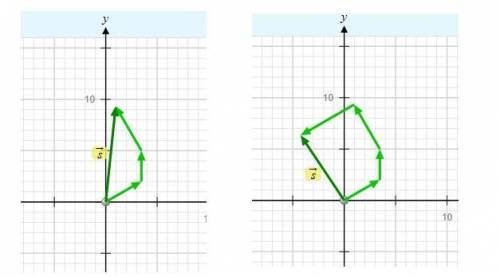
Add the following vectors using head-to-tail method and verify your results using the component method.
1. Vector A has a magnitude of 4.0 cms at an angle of 30 degrees with the positive X-axis; vector B has a magnitude of 3.0 cms at 90 degrees with + X-axis; vector C has a magnitude of 5.0 cms at 120 degrees with + X-axis.
2. In addition to vectors A, B, and C in problem # 1, there is a vector D with a magnitude of 6.0 cms at an angle of 210 degrees with +X-axis.
Note: Use a graph paper to show your work for problem number 1 and 2 using the head-to-tail method.
Do the component method analysis of both of these problems using the component method of adding vectors. Show your work step by step by taking the x and y components of all the vectors; adding all the x and y components together and then finding the resultant vector magnitude and direction knowing x and y are perpendicular to each other.
Compare the results of the graphical analysis as well as the component method and find the percent error using the component method as standard result

Answers: 3
Other questions on the subject: Physics

Physics, 21.06.2019 17:20, gymer630
American eels (anguilla rostrata) are freshwater fish with long, slender bodies that we can treat as uniform cylinders 1.0 m long and 10 cm in diameter. an eel compensates for its small jaw and teeth by holding onto prey with its mouth and then rapidly spinning its body around its long axis to tear off a piece of flesh. eels have been recorded to spin at up to 14 revolutions per second when feeding in this way. although this feeding method is costly in terms of energy, it allows the eel to feed on larger prey than it otherwise could. 1.a field researcher uses the slow-motion feature on her phones camera to shoot a video of an eel spinning at its maximum rate. the camera records at 120 frames per second. through what angle does the eel rotate from one frame to the next? 2. the eel is observed to spin at 14 spins per second clockwise, and 10 seconds later it is observed to spin at 8 spins per second counterclockwise. what is the magnitude of the eels average angular acceleration during this time? 3. the eel has a certain amount of rotational kinetic energy when spinning at 14 spins per second. if it swam in a straight line instead, about how fast would the eel have to swim to have the same amount of kinetic energy as when it is spinning? 4.a new species of eel is found to have the same mass but one-quarter the length and twice the diameter of the american eel. how does its moment of inertia for spinning around its long axis compare to that of the american eel?
Answers: 1

Physics, 22.06.2019 04:50, ineedhelpplz40
Two technicians are discussing a resistance measurement between the can-h and can-l wires. technician a says this measurement should be done with the ignition switch in the "run" position. technician b states that a measurement of 0 ohms indicates an open in the network. which technician is correct?
Answers: 1

Physics, 22.06.2019 10:00, Calirose
Suppose a wheel with a tire mounted on it is rotating at the constant rate of 2.15 times a second. a tack is stuck in the tire at a distance of 0.373 m from the rotation axis. noting that for every rotation the tack travels one circumference (a) find the tack's tangential speed. (b) what is the tacks radial acceleration?
Answers: 2

Do you know the correct answer?
Add the following vectors using head-to-tail method and verify your results using the component meth...
Questions in other subjects:





English, 13.07.2021 15:20













